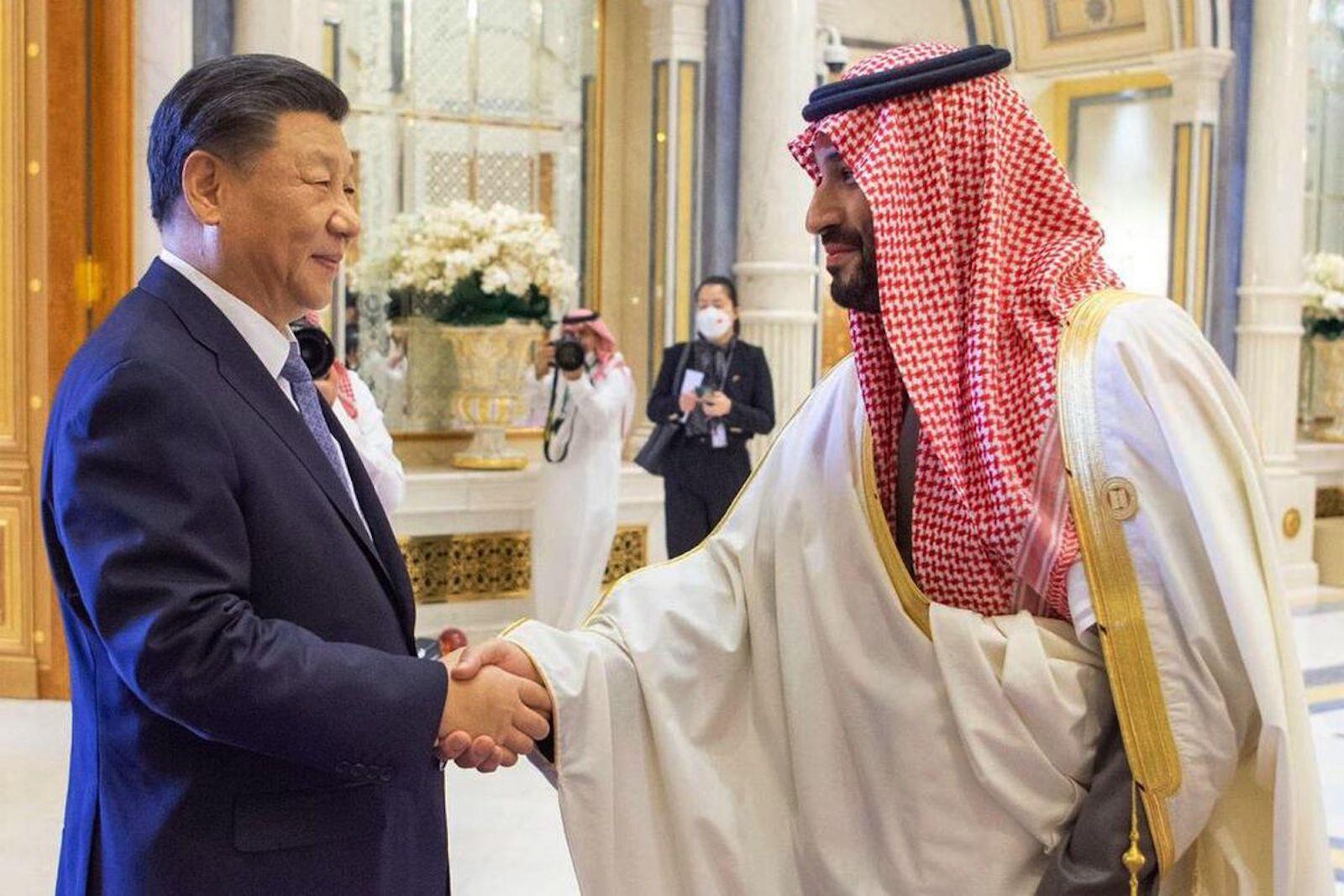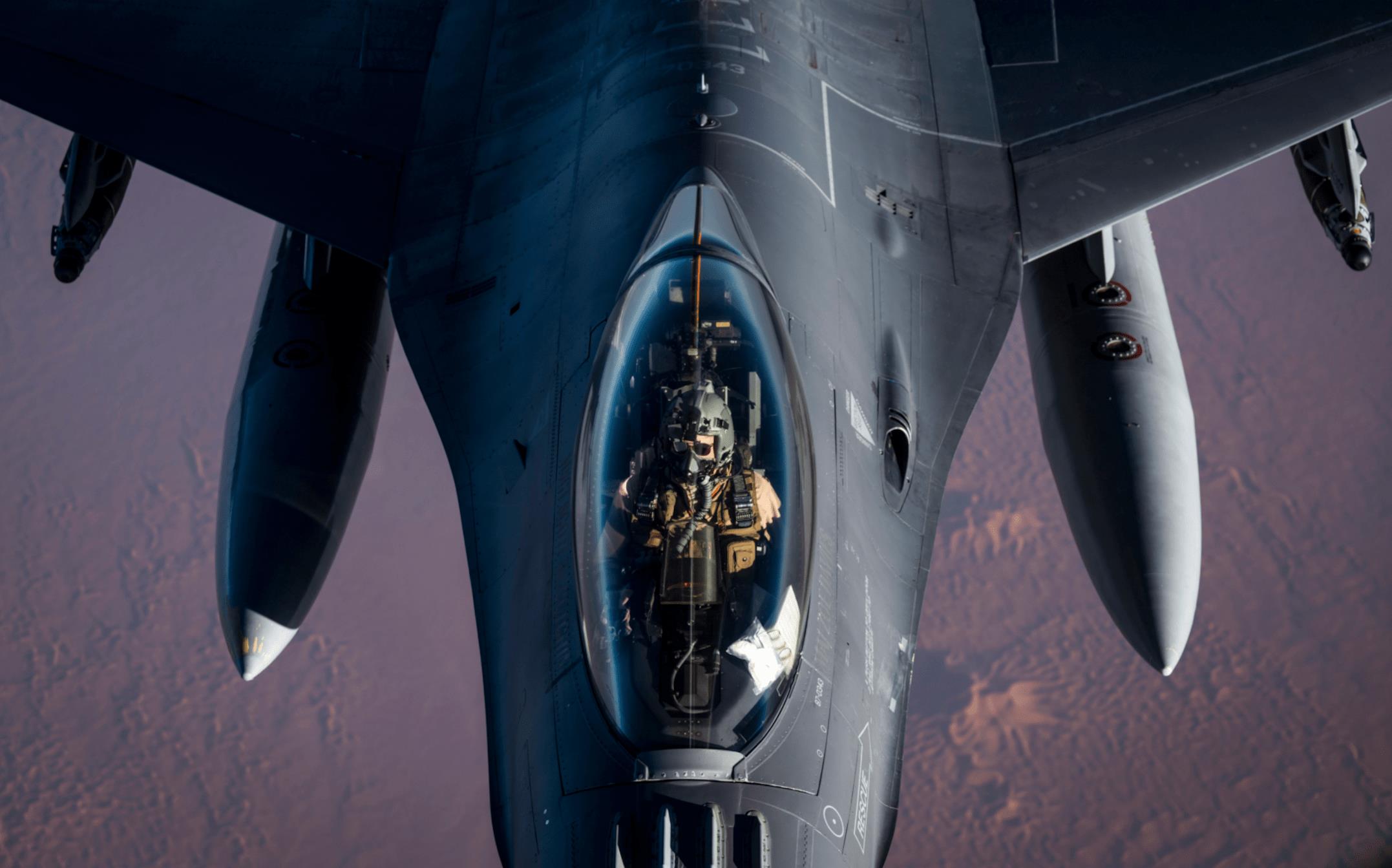
China Seizing US Arms Markets In The Middle East
south china morning post (scmp) reported this month that Saudi Arabia Military Industries (SAMI) is in talks with China North Industries Group Corporation (Norinco) about acquiring China-made Sky Saker FX80 and CR500 vertical take-off and landing (VTOL) drones, Cruise Dragon 5 and 10 loitering munitions and the HQ-17AE short-range air defense (SHORAD) system.
The Egyptian Air Force is also reportedly poised to acquire China's Chengdu Aircraft Industry Group (CAIG) J-10C multirole fighter, with the two sides set to meet during this year's Langkawi International Maritime and Aerospace Exhibition in Malaysia.
SCMP says Egypt plans to acquire 12 J-10Cs, which feature advanced electronic warfare systems and active electronically scanned array (AESA) radar.
the 2022 stockholm international peace research institute (sipri) trends in international arms transfers report notes that, from 2018-2022, Saudi Arabia was the world's second-largest arms importer, accounting for 9.8% of global arms imports over that period, with the US supplying 78% of Saudi Arabia purchases.
The same report notes that Egypt was the world's sixth-largest arms buyer during the period, accounting for 4.5% of global arms imports, with 34% of its imports coming from Russia.
in a 2018 sipri article , Pieter Wezeman notes that Saudi Arabia aims to diversify its arms suppliers to widen and deepen its international political network to minimize the effects of Western arms sales restrictions.
Such restrictions have stemmed from Saudi Arabia's widely-criticized military intervention in Yemen, the 2018 brutal murder of political dissident and journalist Jamal Khashoggi, and last year's OPEC+ oil price dispute with the US.
asia times noted in february 2022 that Saudi Arabia's push to find arms suppliers apart from the US might have been driven by the latter's disastrous withdrawal from Afghanistan, foreign policy mistakes in Iraq and Syria, a fickle-minded approach to Ira, and shift of strategic attention from the Middle East to the Pacific.

Saudi Crown Prince Mohammed bin Salman greets Chinese President Xi Jinping during the China-GCC Summit in Riyadh on December 9, 2022. Image: Saudi Press Agency
Saudi Arabia's arms purchases from the US have also been criticized for being politically motivated, overpriced and out of step with the kingdom's underlying strategic needs.
According to the 2022 SIPRI report, Egypt is the world's sixth-largest arms importer, accounting for 4.5% of global arms imports from 2018-2022, with Russia supplying 34% of its purchases.
Russia has not always been Egypt's preferred arms provider. Bradley Bowman and other writers note in a may 2021 defense news article that before the 2013 Egypt coup, wherein then-defense minister Abdel-Fattah el-Sissi deposed the then-incumbent president Mohammed Morsi, the US accounted for 47% of Egyptian arms imports.
However, after the 2013 coup, the Obama administration froze aircraft, tank, and missile sales to Cairo for two years until relations improved.
Due to that freeze, Bowman and the other writers note that Egypt tried to diversify its arms import providers by purchasing large quantities of weapons from Russia and France, both of which were willing to look the other way on its human rights violations.
However, the threat of US sanctions stemming from Russia's 2022 invasion of Ukraine has forced Egypt to drop its planned purchase of 24 Su-35 fighter jets. The poor performance of Russian weapons in the ongoing Ukraine war may have tainted their appeal to established buyers like Egypt, causing Cairo to look for alternatives from China.
Sebastien Robin notes in a november 2020 forbes article that China's top jets, such as the J-10C, may already have surpassed the best Russia can offer. Robin notes that China has started to build a technical lead over Russia in fighter aircraft development, with Russia's aerospace sector at a disadvantage due to structural and budgetary constraints.
Robin notes that Russia's Su-35s have a passive electronically scanned array (PESA) radar, which is inferior to the AESA radar on the J-10C and other modern Chinese fighters. He also says that China has improved its indigenous jet engine technology and has superior missiles, more mature stealth technology and better integration of precision-guided weapons than Russia.
Mihir Kaulgud notes in a may 2022 article for usanas foundation that China wants to become a major power in the Middle East, but more pragmatic and restrained than the US.
Kaulgud says that China's arms exports to the Middle East show its push to establish a“soft presence” in the region, as shown by its willingness to sell affordable advanced weapons to friendly countries without political strings attached.
Arms sales obviously involve decisions at the highest level of government and thus establish professional linkages via training and education with the selling country, making them ideal focal points of strategic cooperation for China.

Saudi Arabia flies US-made F-16s. Photo: US Air Force Staff Sgt Joseph Pick
Kaulgud states that China is expanding its relationships and networks in the region while not provoking the US. He notes a pragmatic aspect to these ties, as China may want to secure reliable oil and gas providers via its arms sales.
Those sales, Kaulgud notes, can cause Arab states previously aligned with the US to look at China as an alternative security partner, with China likely to create new regional security arrangements and even play a stronger role in Middle Eastern domestic politics.
He says that while present arms exports are the basis of China's security engagement in the Middle East, they can also serve as stepping stones to a broader security and military presence in the region.
Like this:Like Loading...
Legal Disclaimer:
MENAFN provides the
information “as is” without warranty of any kind. We do not accept
any responsibility or liability for the accuracy, content, images,
videos, licenses, completeness, legality, or reliability of the information
contained in this article. If you have any complaints or copyright
issues related to this article, kindly contact the provider above.






















Comments
No comment